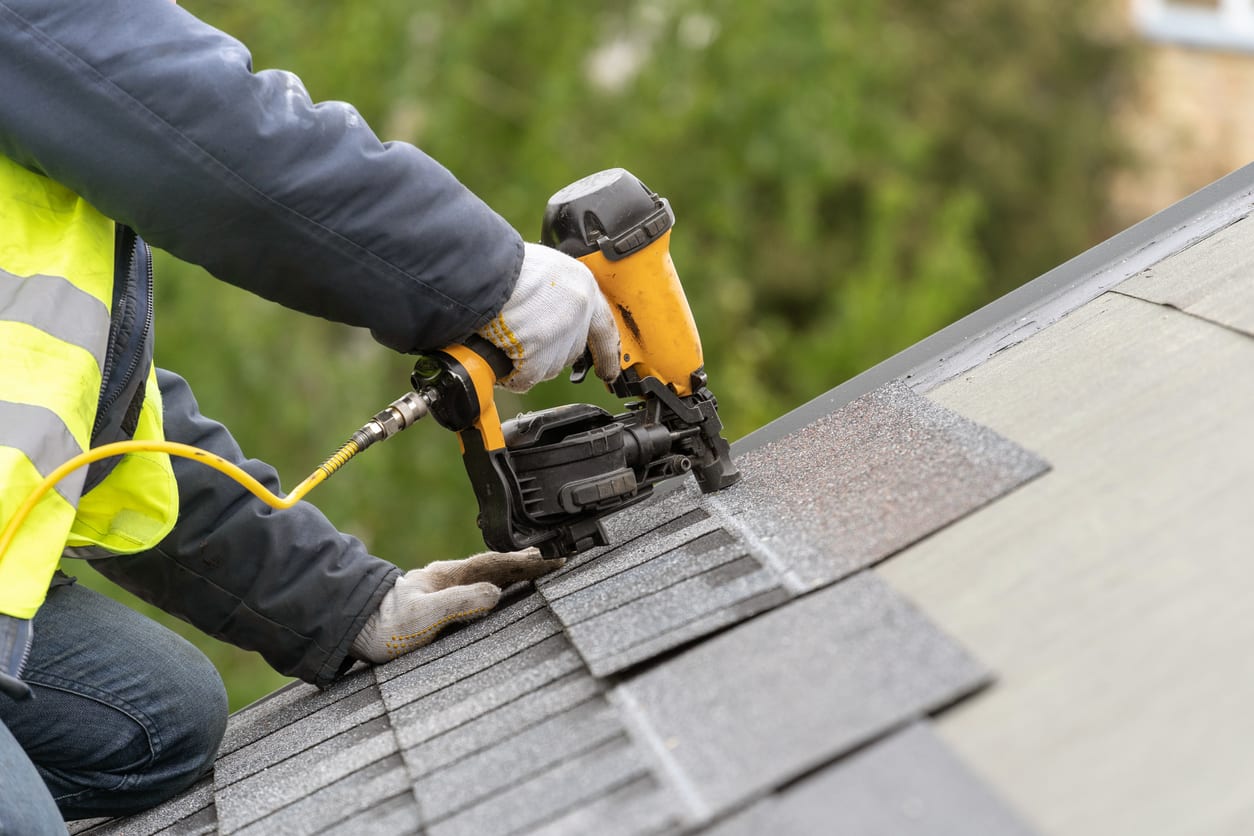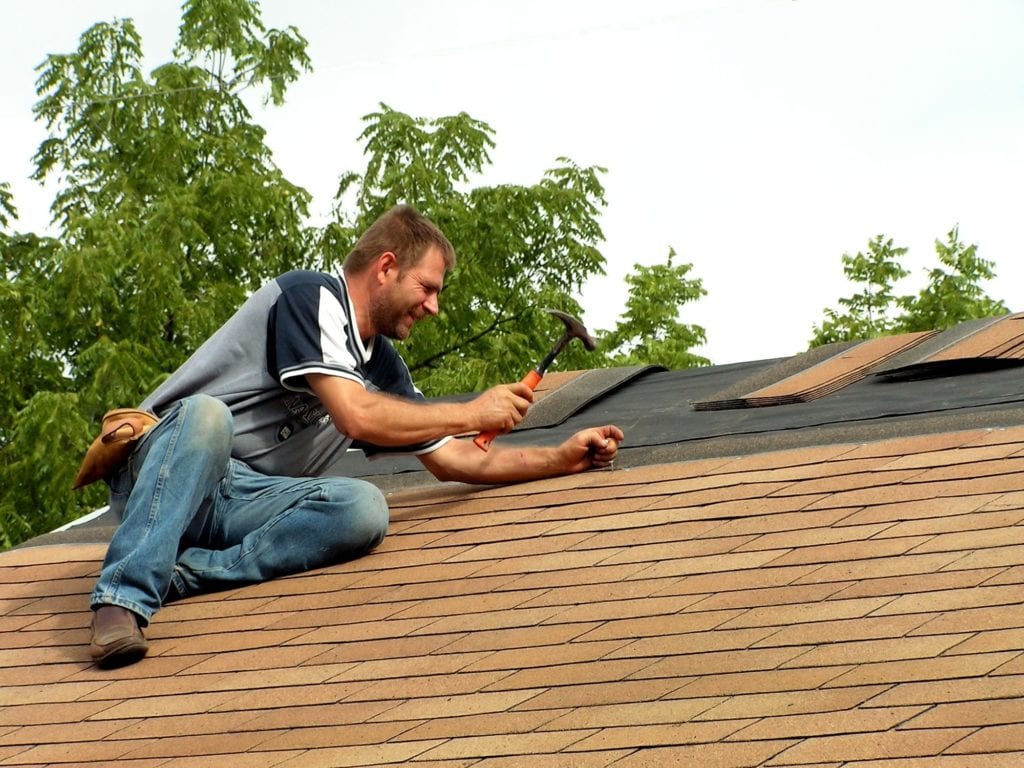Emergency Situation Roof Repair: What to Do When Calamity Strikes
When calamity strikes, examine your roofing's damage meticulously from a range. File the damages with images for your insurance coverage case. If the damage is serious or persistent, calling in professionals is crucial.
Analyzing the Situation: Security First
When you see damages to your roof covering, evaluating the scenario is vital for your security and the honesty of your home. If you see water discolorations on your ceiling, it's a clear sign that your roof covering's underperforming.
Next, consider the climate conditions. If you presume significant damage, speak to a professional roofing professional for a thorough assessment. Do not ignore any kind of indications of potential hazards; they can lead to more significant issues down the line.
Short-lived Solutions to Avoid Additional Damages
When you spot a leak, act quick to secure it and protect against water damages. Making use of tarps can efficiently cover susceptible areas until a long-term solution is possible. Plus, getting rid of debris from your roofing system aids reduce the danger of additional problems during tornados or heavy rain.
Seal Leaks Promptly
Recognize and secure leakages swiftly to minimize damages during an emergency roofing scenario. Begin by checking your roof covering for noticeable indicators of leaks, such as water stains or leaking. If you find a leak, act fast. Use roof tape or waterproof sealant to cover smaller openings and splits momentarily. For larger gaps, you may need to make use of plywood or a comparable material to block the circulation of water. Make sure to safeguard everything tightly to stop wind from displacing your short-lived fixes. Remember, these are fast services, not long-term solutions. Watch on the weather condition and prioritize organizing a professional repair work asap to assure your roof is fully restored and secured.
Usage Tarps Effectively
After securing any kind of noticeable leaks, utilizing tarps can offer a reliable short-term service to prevent more water damages. Safeguard it snugly over the damaged area of your roof, making certain it extends at the very least a foot beyond the leak. Arrange a specialist repair work as soon as feasible to assure your roofing is fully brought back.
Eliminate Debris Promptly
To lessen water damage, without delay getting rid of debris from your roof is crucial. After a storm or severe weather condition, look for dropped branches, leaves, or various other materials that might block drain. Thoroughly climb up and clear the roofing if you observe any type of. Use a strong ladder and use safety equipment to stop mishaps.
If you can't reach the roof covering securely, think about hiring a specialist. Maintaining your roof clear not just secures your home however additionally offers you peace of mind throughout uncertain weather condition.
Recognizing the Kind Of Roofing Damage
Just how can you inform if your roof has experienced damages? Begin by inspecting your roof from the ground. Try to find missing out on roof shingles, sagging locations, or any kind of indications of staining. Check for fractures, openings, or loose products if you can safely access your roofing system. Take notice of blinking around smokeshafts and vents; damaged flashing can lead to leaks.
Next, examine your attic. Look for water stains, mold and mildew, or damp insulation, which indicate prospective roofing system leakages. Listen for any uncommon sounds during heavy rain or wind. After serious climate, take a minute to analyze the situation.
If you find any type of damage, it's important to act promptly. Neglecting these indications can result in extra considerable concerns down the line. Bear in mind, security precedes; if you're not sure regarding climbing onto your roofing, think about working with an expert to analyze the damages for you.
Recording the Damages for Insurance Policy Claims
Once you've recognized roofing system damages, recording it for your insurance policy claim ends up being critical. Beginning by taking clear, in-depth photos of the affected locations. Capture different angles, consisting of close-ups of any kind of substantial damage like leakages or missing out on tiles. Don't neglect to consist of broad shots of your whole roofing system for context.
Following, make a listing of all visible damage, noting the details areas and kinds of issues you located. If you can, write down the estimated dimension of the damage, as this details can sustain your insurance claim.
Additionally, gather any type of pertinent weather condition reports or other evidence that might substantiate your case. Keep receipts for momentary repairs you make to mitigate further damages if feasible. This documentation will certainly not only aid you during the claims procedure yet additionally ensure you receive the settlement you should have.
 roof repair
roof repairWhen to Call in Expert Assistance
When your roofing system shows indications of significant architectural damage, it's time to contact the pros. Extreme weather condition problems can make do it yourself repair services risky, and consistent leaks or bug problems often call for skilled attention. Do not think twice to connect for help when you observe these warning indications.
Significant Structural Damage
While you may really feel tempted to deal with roofing fixings yourself, significant structural damages commonly calls for specialist competence. Do not think twice to call in a roof specialist if you see sagging beam of lights, big cracks, or widespread water damage. They'll have the devices and expertise to evaluate the situation properly and carry out necessary fixings securely. Trying to fix major problems without appropriate training can cause more problems and boosted prices.
Furthermore, if your roofing system has experienced damage from heavy influences or fallen trees, it's necessary to have experts evaluate the stability of the structure. Keep in mind, your safety is paramount. Don't take unnecessary risks-- count on certified experts to restore your roofing and guarantee your home remains secure and safeguarded.
Extreme Climate Conditions
Serious weather can strike unexpectedly, and if you locate on your own dealing with high winds, hefty rainfall, or snow accumulation, it's necessary to assess your roof covering's problem promptly. Don't run the risk of climbing up onto your roofing system in dangerous conditions; leave it to the experts who have the right devices and training. They can appropriately evaluate the damage and suggest prompt repair work, guaranteeing your home keeps dry and risk-free.
Relentless Leakages or Insects
If you have actually discovered relentless leaks or signs of parasites in your home, it's crucial to act swiftly. These problems can lead to extreme damages if left untreated. Ignoring these signs can result in costly fixings down the line, so prioritize your home's safety.
Long-Term Repair Service Options to Consider
When you're ready to move beyond emergency situation fixes, exploring long-term repair work alternatives can verify your roof covering stands solid versus future weather obstacles. Start by evaluating the extent of damages; this will certainly aid you decide if repairing is adequate or if a complete replacement is essential. If you're handling structural concerns or persistent leaks, consider investing in top notch products, like steel or building tiles, which can offer enhanced resilience.
You might also intend to enhance your roof covering's underlayment to improve water resistance. In addition, consider installing air flow systems to stop wetness accumulation, which can lead to mold and mildew and rot. Working with an expert for a thorough inspection can disclose hidden issues and validate all repair work fulfill local codes. Bear in mind, spending in these long-term remedies now can conserve you from even more significant migraines-- and costs-- down the line.
Tips for Future Roof Upkeep and Readiness
To ensure your roofing system remains in wonderful form, normal upkeep is essential. Begin by examining your roof covering at the very least twice a year.
Trim looming branches to avoid them from scraping your roofing system or falling throughout storms. Consider applying a safety sealant to extend your roof covering's life expectancy.
Watch on your attic for leaks and moisture, as this can suggest roof covering issues. Don't wait to address them-- very early intervention can conserve you money and trouble later on. if you spot problems.
Last but not least, create an emergency situation plan. Know that to call for repair services and have a spending plan reserve for unanticipated concerns. By staying aggressive, you'll ensure your roofing system continues to be solid and safe and secure, prepared to stand up to whatever nature throws its way.
Regularly Asked Questions
 roof repair
roof repairHow Can I Tell if My Roofing Is Safe to Stroll On?
To identify if your roofing system's secure to stroll on, inspect for noticeable damage, sagging locations, or loosened tiles. If you're uncertain, it's best to consult a specialist before tipping onto the roof covering. Safety and security first!
What Are Common Indications of Roofing Damages to Try To Find?
You ought to seek broken or missing shingles, water discolorations on ceilings, sagging locations, and granules in seamless gutters. Noticing these indicators early can aid you resolve prospective problems before they end up being serious problems.
Can I Fix My Roof covering Myself, or Should I Hire a Pro?
You can deal with minor roof covering fixings yourself if you're comfy with elevations see more and have the right devices. Nonetheless, for considerable damage or complicated concerns, employing a professional assurances safety and appropriate resolution.
What Tools Do I Need for Emergency Situation Roofing System Repair Works?
For emergency roofing system repairs, you'll require a sturdy ladder, harness, roof covering concrete, a caulking gun, an utility blade, and tarps. Having these devices prepared can assist you attend to concerns swiftly and safely.
Exactly How Do Climate Condition Influence Emergency Roofing Repairs?
Climate condition can considerably affect your emergency situation roofing system repair services. If it's drizzling or snowing, functioning becomes unsafe, and materials may not stick properly. Severe temperatures can likewise influence the healing and securing process, postponing repair work.
Recognize and seal leakages quickly to reduce damage during an emergency roofing system scenario. Protect it firmly over the harmed section of your roofing, making particular it prolongs at least a foot past the leakage. Remember, security comes initially; if you're unclear about climbing up onto your roofing system, consider employing a specialist to evaluate the damages for you.
While you could feel tempted to tackle roof covering repairs yourself, substantial structural damage typically calls for expert knowledge.In addition, if your roof has actually experienced damage from heavy effects or fallen trees, it's essential to have professionals review the integrity of the framework.